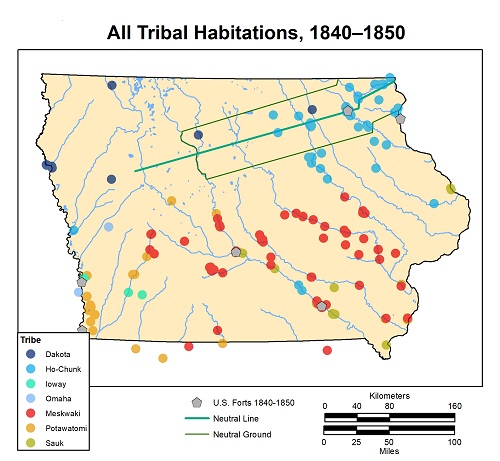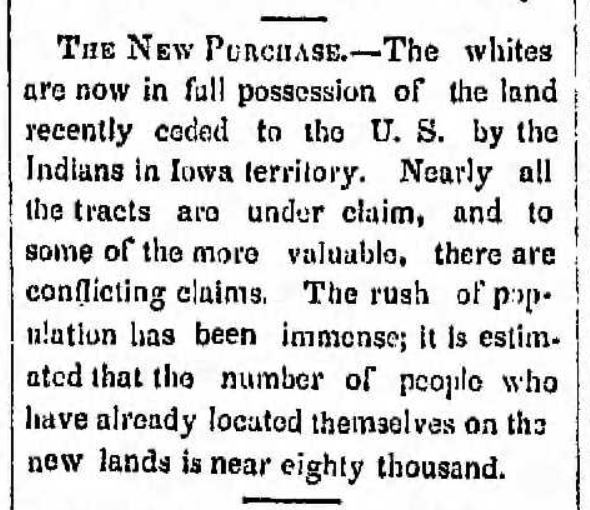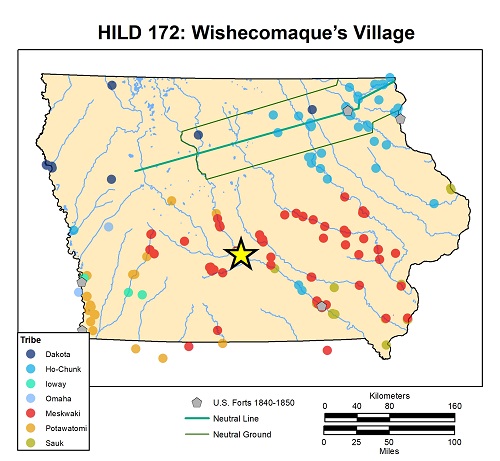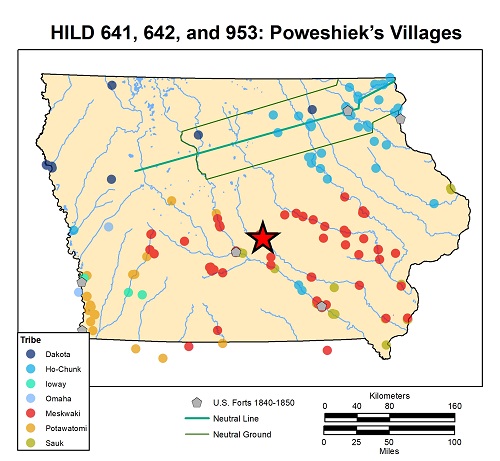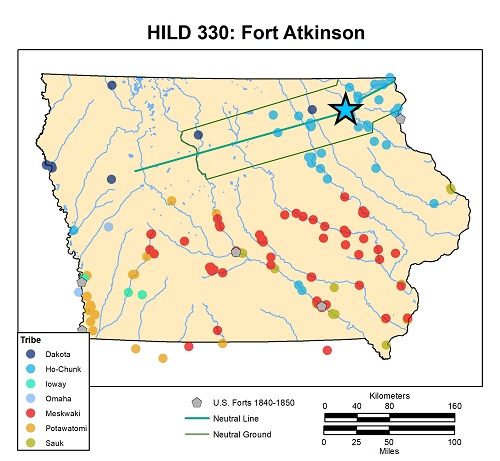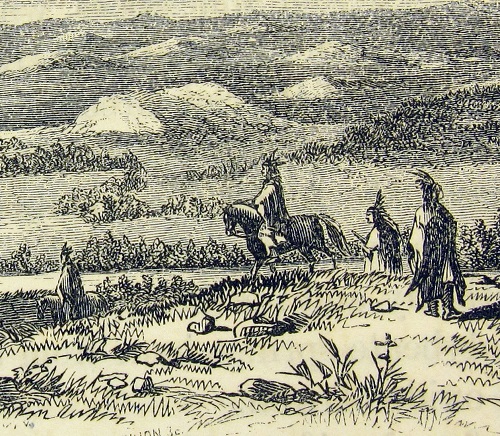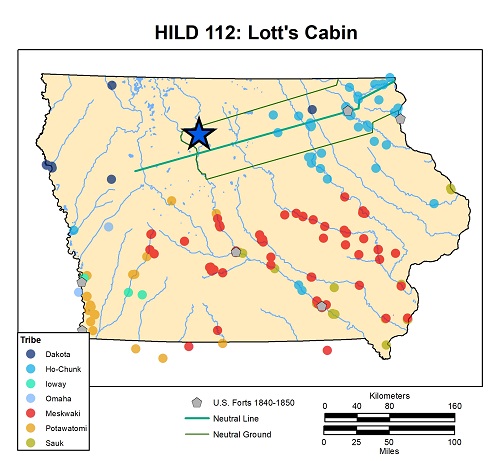1840 – 1850
During this tumultuous period, most of Iowa was settled by Americans, and all Indians were expected to leave the state.
In 1842–1843, Sauk and Meskwaki were forcibly moved to the area that is now Des Moines, where the U.S. Army established Fort Des Moines No. 2. The Meskwaki chose to live farther east, along the Skunk River. In 1845–1846, all Sauk and Meskwaki were supposed to leave the state, but many Meskwaki immediately returned to the Iowa River valley; “Indiantown” was noted and mapped in different locations in Marshall and Tama counties in the late 1840s and early 1850s. In 1857 the Meskwaki formally purchased the first 80 acres of what is now the Meskawki Settlement near Tama.
In 1840, most Ho-Chunk were forcibly relocated into the Neutral Ground in northeast Iowa, crammed between the Dakota, their enemy to the north, and the Sauk and the Meskwaki, with whom they had an often acrimonious relationship, to the south. As late as February 1840, the Sauk and Ho-Chunk reportedly had a large battle 50 or 60 miles west of Dubuque, during which more than 40 people were killed. Because the boundaries of the Neutral Ground were arbitrary lines not marked in the field, there is little concordance with the ranges of Ho-Chunk, Dakota, Sauk, and Meskwaki. Soldiers at Fort Atkinson, built in 1840, were meant to keep the peace in the region. Ho-Chunk were forced from the state in 1848–1849.
HILD data suggest that the Neutral Ground was carved from Dakota territory, so it is not surprising that there is historical evidence of Dakota occupation of the Neutral Ground and that these occupations led to conflict. Although historic accounts are inconsistent, there may have been a massacre of Dakota living in the Neutral Ground by Ho-Chunk in 1847. A second massacre of Dakota in the Neutral Ground presaged the Spirit Lake Massacre. In 1846, a Dakota leader, Sidimondonta, got into a feud with a trader named Henry Lott near the mouth of the Boone River; Lott’s wife and son died as a result. In retaliation, in 1849 Lott tracked down Sidimondonta and murdered him and his family near Livermore. Sidimondonta’s brother, Inkpaduta, was enraged by this act but was unable to get the U.S. government to take action. Eventually, Inkpaduta perpetrated the Spirit Lake Massacre of 1857.
